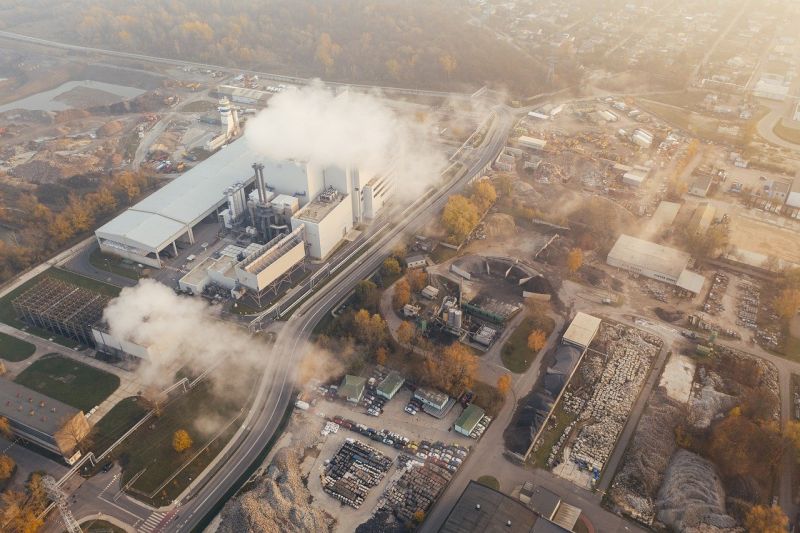On 12 December 2020, Chinese President Xi announced new 2030 climate targets via video link to the Climate Ambition Summit organized by the UN, the UK and France. This was the second time in three months that China boosted its climate commitments to target carbon neutrality by 2060. This little-known fact surprises experts and the international community. We want to look deeper into the subject and the potential opportunities for you – tech companies based in Europe.
Are you looking to enter the Chinese market? If so, this pledge is another option to help to showcase your credentials as an eco-conscious start-up. There are also a variety of opportunities that will help to maximise opportunities for business success.
What does the pledge mean for your life science business?
Carbon neutrality refers to a status where carbon dioxide emissions and removals balance out to zero, usually done through carbon offsetting or simply eliminating carbon dioxide emissions altogether.
Chinese government claimed that over the next five years and beyond, China will control the aggregate amount and intensity of energy consumption, reduce the use of fossil energy and advance the low-carbon transition of sectors including industry, construction and transportation, according to the draft outline of the 14th Five-Year Plan (2021-2025) for national economic and social development and the long-range objectives through the year 2035.
The outline also noted that China will further transform its energy consumption structure by promoting the wider use of clean and renewable energy during the 2021-2025 period.
By 2030, China aims to lower carbon dioxide emissions per unit of GDP by over 65 percent from the 2005 level, raise the share of non-fossil energy in primary energy use to around 25 percent, and bring the total installed capacity of wind and solar electricity to more than 1.2 billion kilowatts.
Why is China making the claim now?
China has long argued that as a developing economy it should not have to share the same burden of curbing emissions as developed nations, as the world’s largest carbon emitter. Why China surprisingly announces its very ambitious goal which leaves the country a very big task and tight action table.
Our extensive research concludes the following:
There’s immense economic opportunities and geopolitical advantages of a low-carbon transition
Firstly, China has positioned itself as a leading manufacturer of green technologies, from electric vehicles to solar panels to wind turbines. It is therefore poised to meet growing global demand for cleaner technologies.
Secondly, China can reduce its dependence on energy imports through a savvy combination of expanding renewable electricity generation and electrifying transport, industry, heating and cooling.
A new global image for China is much-needed
Wang Wenbin, a spokesman for the Ministry of Foreign Affairs, touted the growth of renewable energy, saying China’s capacity now accounted for 30 percent of the world’s total. Meeting the new goals “reflects China’s willingness to work with other countries to build a vigorous, clean and beautiful world and its responsibility to build a community with a shared future for mankind”. If you’re looking to expand your start-up and build a larger, environmentally friendly future then the Chinese market may hold the opportunities you need.
President Xi’s pledge is an important contribution to global efforts to tackle climate change. It also provided Beijing with the chance to score a relatively easy diplomatic win, being used as further evidence that it is the US, not China, which seeks to upend current international systems.
Following the announcement, many research groups have begun to work on how carbon neutrality could be achieved. The plans differ in their details, but agree that China must first begin to generate most of its electricity from zero-emission sources, and then expand the use of this clean power wherever possible. It will also need technologies that can capture CO2 released from burning fossil fuels or biomass and store it underground, known as carbon capture and storage (CCS).
A scenario led by energy modeller Jiang Kejun at the Energy Research Institute of the National Development and Reform Commission (NDRC) in Beijing would see emissions peak as soon as 2022, at around 10 gigatonnes of CO2, followed by a steep drop to net zero by 2050.
To achieve this, electricity production would double to 14,800 terawatt hours by 2050 and it would be generated largely by nuclear power (28%), followed by wind (21%), solar (17%), hydropower (14%) and biomass (8%). Coal and gas would make up 12% of electricity production.
This means that China’s nuclear capacity would need to increase 5-fold, to 554 gigawatts by 2050, through rapid construction of new sites.
According to Jiang’s analysis, nuclear power can supply a more consistent base load of power than solar and wind can. He adds that the latest nuclear-plant designs are safe and produce minimal radioactive waste.
Many researchers are sceptical about nuclear’s potential. The cost and time required to build the plants has increased significantly, says Zhang. And the 2011 meltdown at the Fukushima Daiichi nuclear power station in Japan has made building plants inland unacceptable to much of the public, he says.
A renewable boost
Another group led by Zhang Xiliang, a climate modeller at Tsinghua University in Beijing suggests that theelectricity production would need to be more than double, to 15,034 terawatt hours by 2060, largely from clean sources.
This growth would be driven by a massive ramp-up of renewable electricity generation over the next 40 years, including a 16-fold increase in solar and a 9-fold increase in wind. To replace coal-fired power generation, nuclear power would need to increase sixfold, and hydroelectricity to double.
Fossil fuels, including coal, oil and gas, would still account for 16% of energy consumed, so would need to be paired with CCS or offset by new forest growth and technologies that can take CO2 directly out of the atmosphere.
Shifting China’s economy away from its dependence on fossil fuels in such a short time will be very expensive. Coal-fired power accounts for almost 65% of the country’s electricity generation, with more than 200 new coal-fired power stations planned or under construction. There will be tremendous opposition and resistance from industries that rely on fossil fuels.
To expand its CCS capabilities would also require significant investment, because China currently has only one large CCS facility in operation, at an oil field. Seven more facilities are being planned or built. CCS would allow China to continue using some coal-fired power in the long term, but some researchers say the technology is still very expensive, which limits its application.
In addition, ensuring stable operation of the electricity grid, given the intermittent nature of wind and solar power, will be another challenge, says Yu Sha, an energy researcher at the University of Maryland, in Washington DC, who has also worked on modelling China’s energy system.
“Science is key to ensuring the simultaneous realization of carbon neutrality and economic and social development”
Wang Zhigang, Chinese Minister of Science and Technology Wang Zhigang.
Peaking carbon dioxide emissions and achieving carbon neutrality will bring about a sci-tech revolution, resulting in major changes in the economy and society, which is no less important than the three previous industrial revolutions, said Wang at the Xiangshan Science Conferences held in Beijing recently.
The emission control efforts will test and develop a series of scientific conclusions, methods and technological innovations, said the minister, calling on Chinese researchers to create competitive advantages through sci-tech innovations to support China’s low-carbon development.
He also stressed talent cultivation, which will provide support for achieving the carbon-neutral goal.
Chinese ministries have estimated the investment to achieve carbon neutrality by 2060 stands at a massive $14.725 trillion (100 trillion renminbi) over the next 30 years, an average of $4.9 trillion per decade and $490 billion per year. To put this in perspective, the G20’s fiscal stimulus in 2008 amounted to $1.1 trillion, with China’s contribution at $586 billion, and the current global response and recovery to Covid-19 has reached $10 trillion. With such an ambitious level of investment, studies are already showing that China will benefit greatly from driving the global low-carbon transition in the next 30 years.
References:
- How China could be carbon neutral by mid-century by Smriti Mallapaty
- China’s carbon neutrality efforts to push scientific innovation: minister by Xinhua Net
- Chinese roadmap by 2060 for a carbon neutral future by CGTN
- Five expert views on China’s pledge to become carbon neutral by 2060 by Sarah Colenbrander, Yue Cao, Rebecca Nadin, Stephen Gelb, Laetitia Pettinotti




